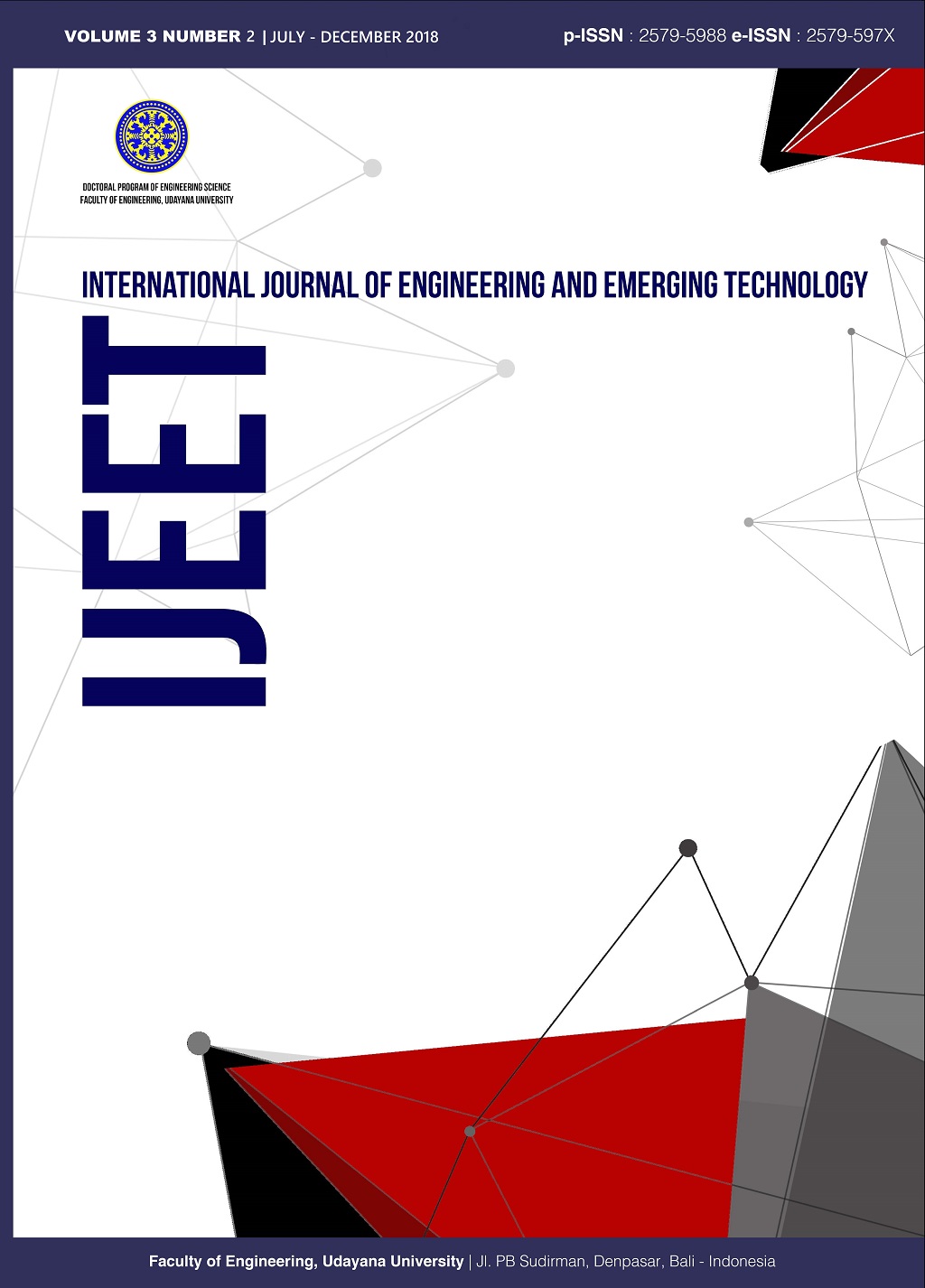Effect of Solvents on Natural Dyes Extraction from Mangosteen Waste for Dye Sensitized Solar Cell Application
Abstract
Natural dyes are economically and environmentally superior to ruthenium-based dyes because they are cheap and non-toxic. In this study, natural dyes were extracted from mangosteen peel waste. Color extraction was carried out with three types of solvents (distilled water, methanol and ethanol) which had been acidified with 10% citric acid and with a ratio of material: solvent (1: 4, 1: 6, 1: 8 w / v). The photochemical properties are studied by UV-Vis spectrophotometer and FTIR spectroscopy. The absorption peak of the three types of solvent occurs at different wavelengths. The presence of carbonyl (C = O) and hydroxyl (OH) groups contained in anthocyanins can attach coloring to the surface of TiO2. Ethanol solvents with a ratio of 1: 8 produce the lowest photon energy at wavelength and absorption coefficient of 539.00 nm and 2,008 km-1 respectively. The lowest band gap of the dye helps electrons move rapidly from the valence band to the conduction band and only requires less energy for electron recombination which will increase the performance of the DSSC.

 Indexed By
Indexed By







